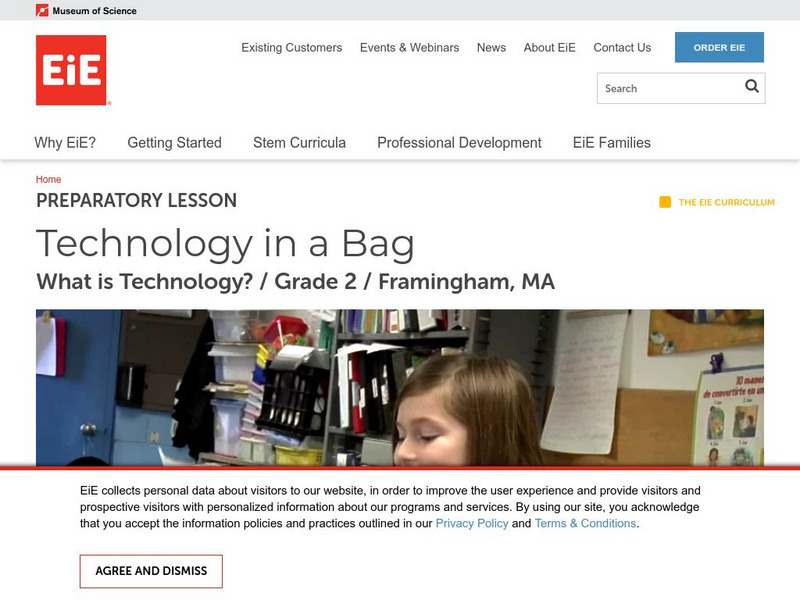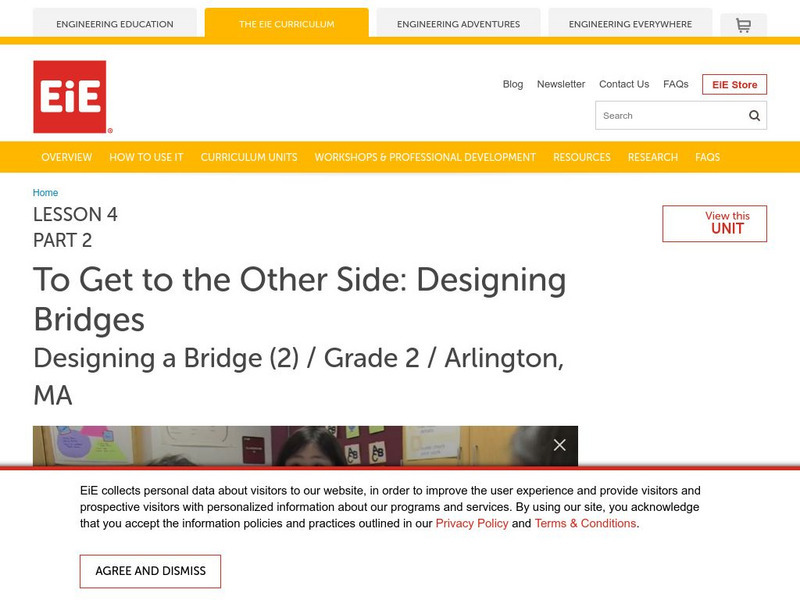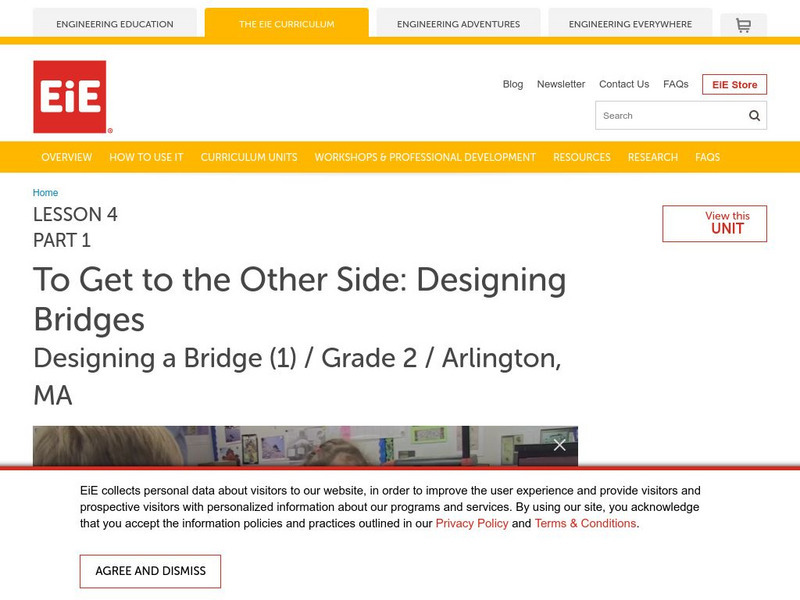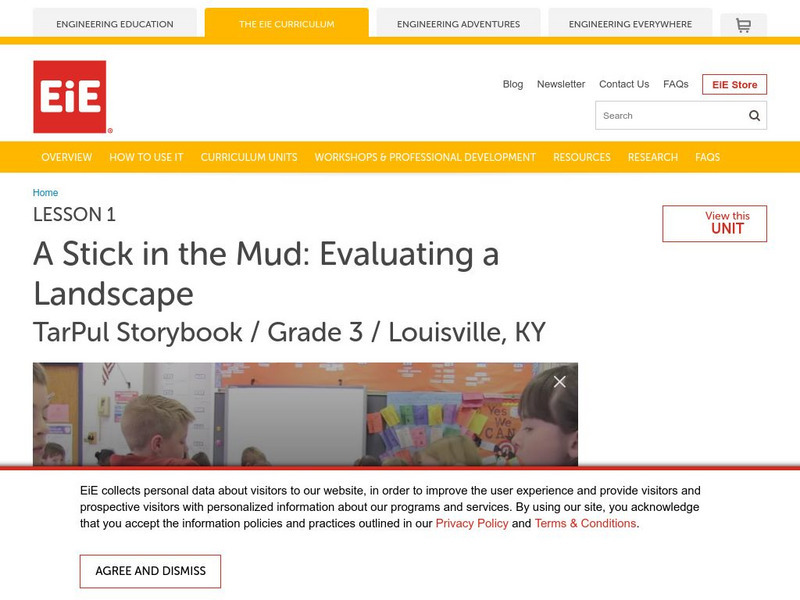Museum of Science
Ei E: The Best of Bugs: Designing Hand Pollinators Lesson 2
Students think like agricultural engineers as they perform a play about Integrated Pest Management at an apple orchard. [8:47]
Museum of Science
Ei E: The Best of Bugs: Designing Hand Pollinators Lesson 1
A storybook introduces the engineering challenge and context. In this story, Mariana, a girl from the Dominican Republic, learns about agricultural engineering as she designs a hand pollinator to use in her garden. [7:49]
Museum of Science
Ei E: What Is Technology?
Students think about what technology is and are introduced to the idea that engineers design technologies. [13:21]
Museum of Science
Ei E: What Is Technology?
Students think about what technology is and are introduced to the idea that engineers design technologies. [14:35]
Museum of Science
Ei E: Designing a Bridge (2)
Students apply their knowledge of balance, forces, and civil engineering as they imagine, plan, create, test, and improve their own bridges.
Museum of Science
Ei E: Designing a Bridge (1)
Students apply their knowledge of balance, forces, and civil engineering as they imagine, plan, create, test, and improve their own bridges.
Museum of Science
Ei E: Bridging Understanding (2)
Students perform a controlled test of three types of bridges to see how much weight the bridges can support.
Museum of Science
Ei E: Bridging Understanding (1)
Students perform a controlled test of three types of bridges to see how much weight the bridges can support.
Museum of Science
Ei E: A Stick in the Mud: Evaluating a Landscape Lesson 4 Part 1
Students use maps to study the erosion along a riverbank over time and conduct controlled experiments to determine how soil compaction around a foundation affects the foundation's strength. [13:19]
Museum of Science
Ei E: Tar Pul Storybook
A storybook introduces the engineering challenge and context. In this story, Suman, a boy from Nepal, learns about geotechnical engineering as he helps evaluate a site for a TarPul. [13:57]
Museum of Science
Ei E: Catching the Wind: Designing Windmills Lesson 3 Part 2
Students predict, test, observe, and describe how sails made of different materials and shapes catch the wind. [15:00]
Museum of Science
Ei E: A Work in Process: Improving a Play Dough Process Lesson 1
A storybook introduces the engineering challenge and context. In this story, Michelle, a girl from Canada, learns about chemical engineering as she attempts to design a play dough making process to share with her hockey teammates. [7:02]
Museum of Science
Ei E: The Attraction Is Obvious: Designing Maglev Systems Lesson 2
Students think like transportation engineers as they improve the safety and efficiency of a model intersection. [10:01]
Museum of Science
Ei E: Lighten Up: Designing Lighting Systems Lesson 3 Part 2
Students experiment with reflecting light using mirrors and learn about light intensity. [10:28]
Museum of Science
Ei E: Evaluating a Landscape (2)
Students focus on the geotechnical engineering problem of evaluating a landscape as they imagine, plan, create, test, and improve a site for a wire cable bridge called a TarPul. [15:26]
Museum of Science
Ei E: A Stick in the Mud: Evaluating a Landscape Lesson 3 Part 1
Students use maps to study the erosion along a riverbank over time and conduct controlled experiments to determine how soil compaction around a foundation affects the foundation's strength. [8:35]
Museum of Science
Ei E: Evaluating a Landscape (1)
Students focus on the geotechnical engineering problem of evaluating a landscape as they imagine, plan, create, test, and improve a site for a wire cable bridge called a TarPul. [16:18]
Museum of Science
Ei E: Designing Model Membranes: Biology Meets Technology
In this video [12:44] students think like bioengineers as they match natural objects with technologies that have similar functions.
Museum of Science
Ei E: Designing a Model Membrane (2)
Students focus on the bioengineering problem of meeting the basic needs of an organism as they imagine, plan, create, test, and improve their own model membrane.
Museum of Science
Eie: Engineering Is Elementary: A Magnetic Personality
Students engage in several experiments to learn more about the properties of magnets.
Museum of Science
Eie: Engineering Is Elementary: Designing a Hand Pollinator (1)
Students apply their knowledge of materials, the pollination system, and agricultural engineering as they imagine, plan, create, test, and improve their own hand pollinators.
Museum of Science
Ei E: To Get to the Other Side: Designing Bridges Lesson 2
Students think like civil engineers as they observe how forces affect structures by pushing and pulling and implement engineering solutions to balance forces and prevent structural failure. [15:44]
Museum of Science
Eie: Lighten Up: Designing Lighting Systems Lesson 3 Part 1
Students experiment with reflecting light using mirrors and learn about light intensity. [11:51]
Museum of Science
Ei E: Thinking Inside the Box: Designing Plant Packages Lesson 3 Part 1
Students determine the needs of the plant and the consumer for which they are designing their plant packages. [13:38]











